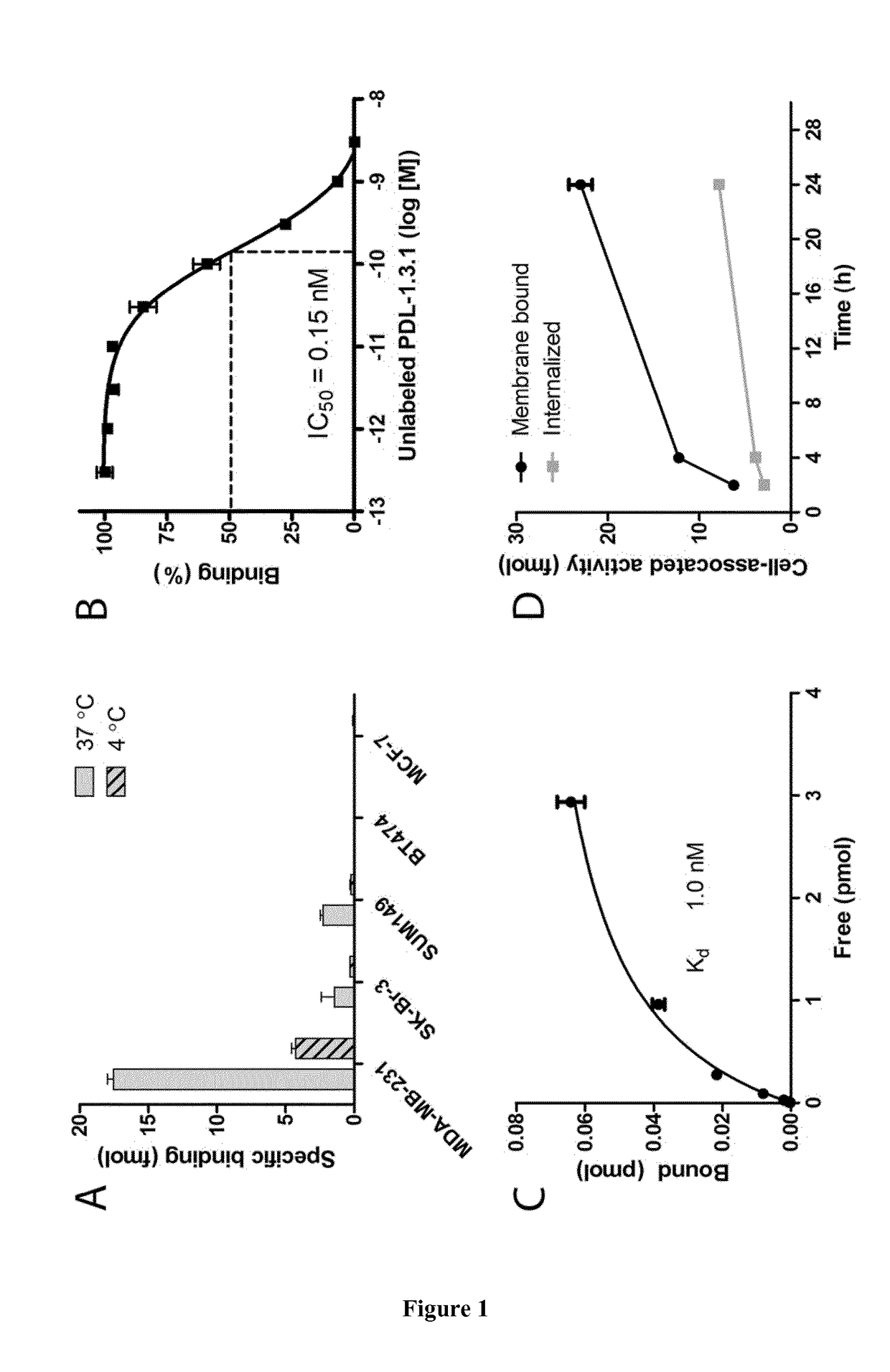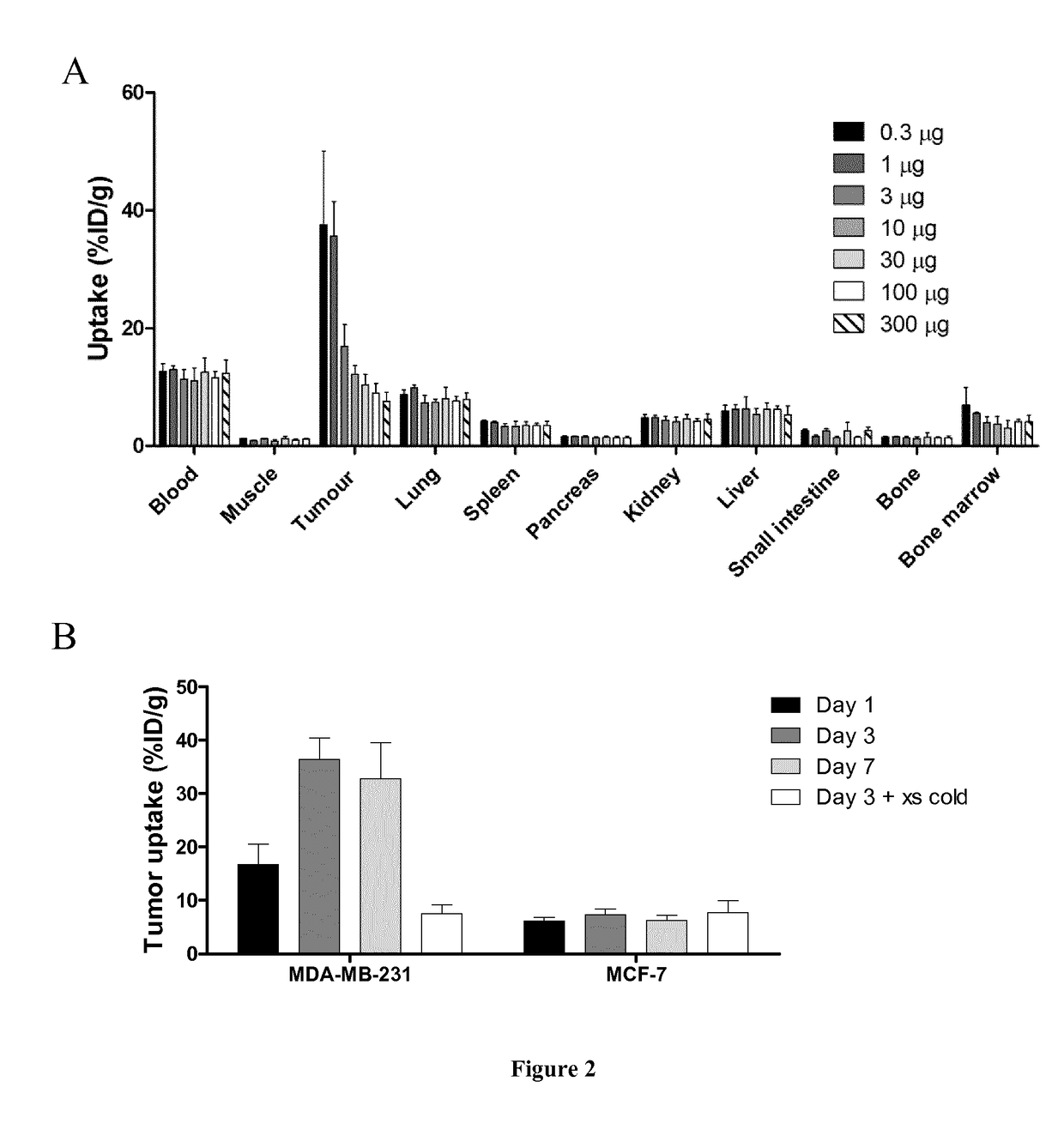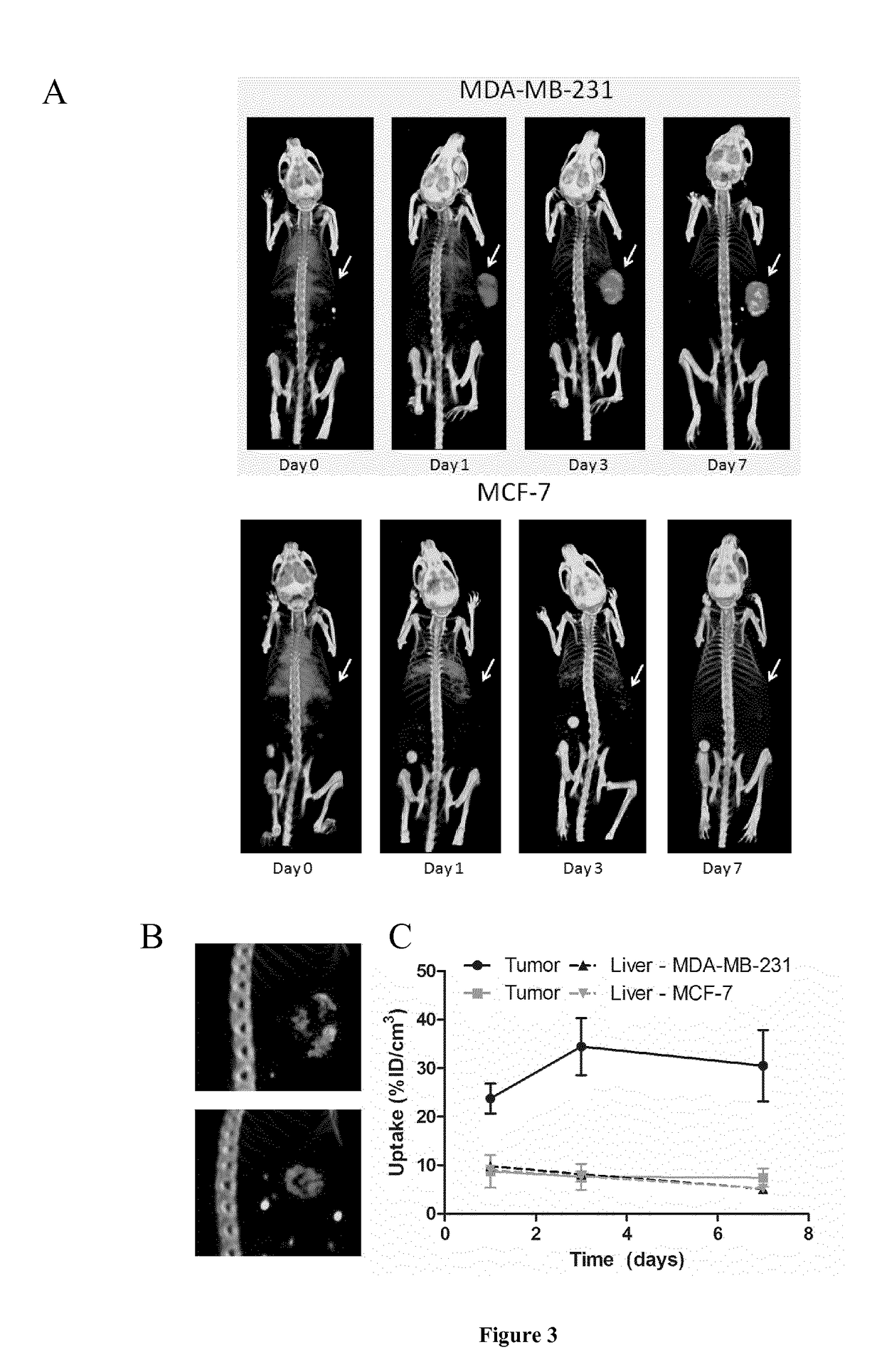Anti-pd-l1 immunotoxin for use in therapy
a technology of immunotoxin and anti-pdl1, which is applied in the field of anti-pdl1 immunotoxin for use in therapy, can solve the problems of difficult to efficiently treat solid tumors such as prostate, breast or pancreatic cancer, and lack of efficient methods for identifying patients, and achieve the effect of efficient targeting pd-l1-positive tumors
- Summary
- Abstract
- Description
- Claims
- Application Information
AI Technical Summary
Benefits of technology
Problems solved by technology
Method used
Image
Examples
example 1
Coupled Anti-PD-L1 Antibodies are Effectively Targeted to PD-L1-Positive Tumors.
[0107]Material and Methods
[0108]Cell Culture
[0109]The breast cancer cell lines MDA-MB-231, SK-Br-3, and MCF-7 were cultured in RPMI1640 (GIBCO, BRL Life Sciences Technologies, The Netherlands), supplemented with 2 mM glutamine (GIBCO) and 10% FCS (Sigma-Aldrich Chemie BV, The Netherlands) at 37° C. in a humidified atmosphere with 5% CO2. SUM149 was cultured in Ham's F12 medium (GIBCO) supplemented with 5% FCS, 10 mM 4-(2-hydroxyethyl)-1-piperazineethanesulfonic acid (HEPES, GIBCO), hydrocortisone (1 μg / ml, Sigma-Aldrich Chemie BV), and insulin (5 μg / ml, Sigma-Aldrich Chemie BV). BT474 was cultured in RPMI1640, 2 mM glutamine, 10% FCS, and 10 μg / ml insulin.
[0110]FACS Analysis of PD-L1 Expression
[0111]PD-L1 expression of MDA-MB-231, SK-Br-3, SUM149, BT474, and MCF-7 cells was determined by FACS analysis. Cells were incubated with PD-L1-PE (557924, BD biosciences, San Jose, Calif.) or mouse IgG1-PE (400114,...
example 2
Production of Anti-PD-L1 Immunotoxins
[0159]Immunotoxin conjugated mAb is obtained by conjugating the PD-L1.3.1 antibody to DM1 or Auristatin. The antibody-drug conjugate (ADC) obtained is tested on cells plated in 96 well plate at 20-30% confluency in 100 μl culture medium and incubated overnight.
[0160]Serial dilution of antibody are done from 20 nM to 160 nM and added to cells. Protein G-drug conjugate is then added (20 nM) to appropriate wells. Plates are incubated 4 days and cell viability measured using the alamar bue assay. Significant cytotoxicity is observed on several tumor cell lines, such as the prostate cancer cell line PC3.
PUM
| Property | Measurement | Unit |
|---|---|---|
| pH | aaaaa | aaaaa |
| pH | aaaaa | aaaaa |
| pH | aaaaa | aaaaa |
Abstract
Description
Claims
Application Information
 Login to View More
Login to View More - R&D
- Intellectual Property
- Life Sciences
- Materials
- Tech Scout
- Unparalleled Data Quality
- Higher Quality Content
- 60% Fewer Hallucinations
Browse by: Latest US Patents, China's latest patents, Technical Efficacy Thesaurus, Application Domain, Technology Topic, Popular Technical Reports.
© 2025 PatSnap. All rights reserved.Legal|Privacy policy|Modern Slavery Act Transparency Statement|Sitemap|About US| Contact US: help@patsnap.com



